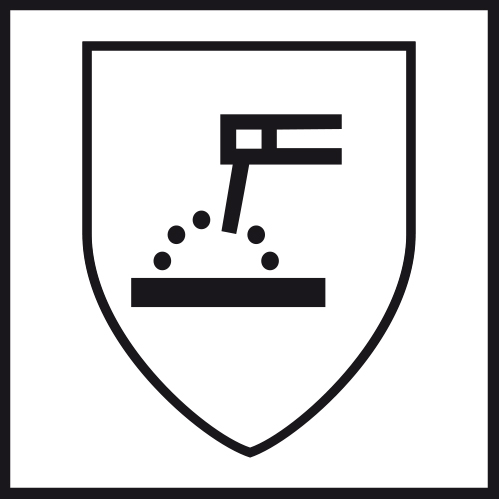

EN ISO 11611:2015
Protective clothing for use in welding and related processes
Standard for protective clothing that protects the user when welding or performing similar work. The standard is relevant for welders and industrial workers.
DESIGN REQUIREMENTS:
Manufacture of the garment is based on the standard's various design requirements. Example of such requirements:
- There must be no creases, folds, etc. where welding beads can settle no through-metal
- Minimum 20 cm overlap between jacket and trousers in all working positions
SELECTION CRITERIA FOR WELDING APPAREL:
Criteria for choosing welding equipment, selection criteria based on process and environment.
Class 1:
Manual welding techniques with low spatter and droplets, e.g.:
- Gas welding
- TIG welding
- MIG weldingMicroplasma welding
- Soldering
- Spot welding
- MMA welding (with rutile-coated electrode)
Use of machines, e.g.:
- Machines for oxygen cutting
- Machines for plasma cutting
- Machines for resistance welding
- Machines for thermal spraying
- Bench welding
Class 2:
Manual welding techniques with a lot of spatter and droplets, e.g.:
- MMA welding (with basic or cellulose-coated electrode)
- MAG welding (with CO2 or mixed gas)
- MIG welding (with high current)
- Self-shielded, flux core-based arc welding
- Plasma cutting
- Oxygen cutting
- Thermal spraying
Use of machines, e.g.:
- In small rooms
- When welding or cutting overhead
- In other challenging situations
Requirements for textiles
Requirements for mechanical strength, flame and heat resistance are divided into two classes:
Class 1:
For less dangerous techniques and situations that cause smaller amounts of droplets and radiant heat. Suitable for manual welding techniques with less spatter and droplets, e.g. gas welding, TIG welding, MIG welding, microplasma welding, soldering, spot welding and MMA welding. The fabric must be able to withstand at least 15 droplets of liquid metal without exceeding a temperature increase of 40°C on the back of the fabric.
For more dangerous welding techniques and situations that cause larger amounts of droplets and radiant heat. Suitable for manual welding techniques with greater spatter and droplet formation, e.g. MMA welding (with basic or cellulose-coated electrode), MAG welding (with CO2 or mixed gas), MIG welding (with high current). The fabric must be able to withstand at least 25 droplets of liquid metal without exceeding a temperature increase of 40°C on the back of the fabric.
Information on the dangers of UV radiation
During arc welding, there is a risk of exposure to ultraviolet (UV) radiation. During use, the textile in the garment will be exposed to wear, meaning the protection will deteriorate. Therefore, examine the garment regularly to avoid exposure to UV radiation. A simple way to check that the garment still protects against UV radiation is to hold the garment at arm's length from the light of a 100 W light bulb (distance from the light source should be approx. 1 m). If light penetrates the textile, UV rays will also penetrate. Checks should be carried out weekly. If the user experiences symptoms similar to sunburn, UVB rays are penetrating. If the garment shows penetration of UV rays, the garment should be repaired (if possible) or replaced, and consideration should be given to the use of more protective layers with greater protection in the future.
